
Sundance is in full swing, and these next few days will be a weekend that some creatives will never forget. To start our tech coverage off, we first covered the cameras used on this year’s Sundance projects.
And we found that Canon has made a mark on filmmakers, no matter the genre.
Now as we look at the lens choices Sundance-certified creatives made, our initial findings are further cemented as we see Canon is a favorite of Sundance filmmakers, most likely due to the popularity of the EF mount.
But let’s dig in a bit deeper to discover more and see what filmmakers have said about their projects.
The Staying Power of EF
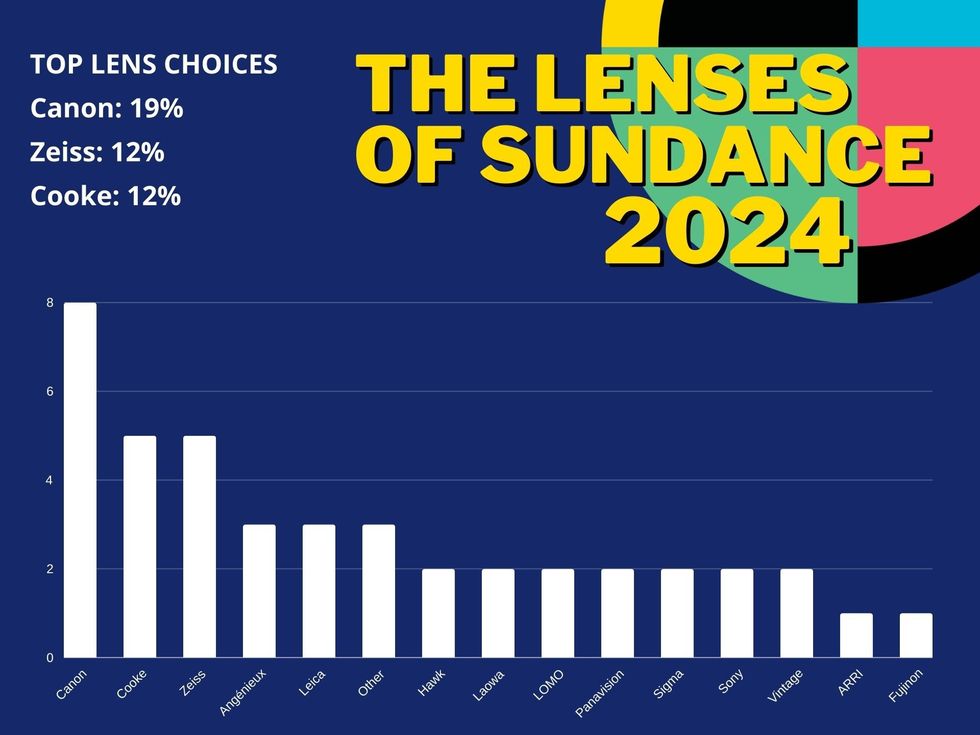
As in our previous article covering camera systems, our survey received responses from 47 out of 91 projects featured at this year’s festival.
From that total, 43 different lens sets were used, with some projects using computer generated imagery or animation.
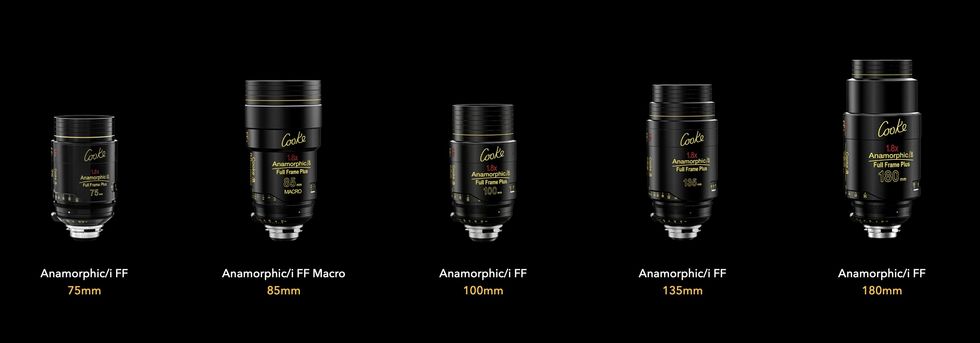
When looking at our results, Canon seems to be the clear choice from the filmmakers who responded to the survey. Further analyzing of our results, it initially seems that Canon’s popularity is due to the incredible popularity of the EF Mount.
Several projects used L-series lenses, vintage Canon primes, and zooms.
While this increase in Canon glass is mostly due to how many Canon cameras were used for this year’s festival projects, Canon lenses were also used on RED cameras. In addition, some Canon cameras were paired with vintage Minolta and Leica lenses.
Following that, Cooke and Zeiss are neck and neck, with both brands being a popular choice amongst are surveyed filmmakers.
With Zeiss, both cinema lenses and photography lenses were used, showcasing the popularity and utility of the brand.
But as we look deeper, what’s most interesting is now many different lens brands are being used—a total of 15 different lens companies.
What Sundance Filmmakers Had To Say
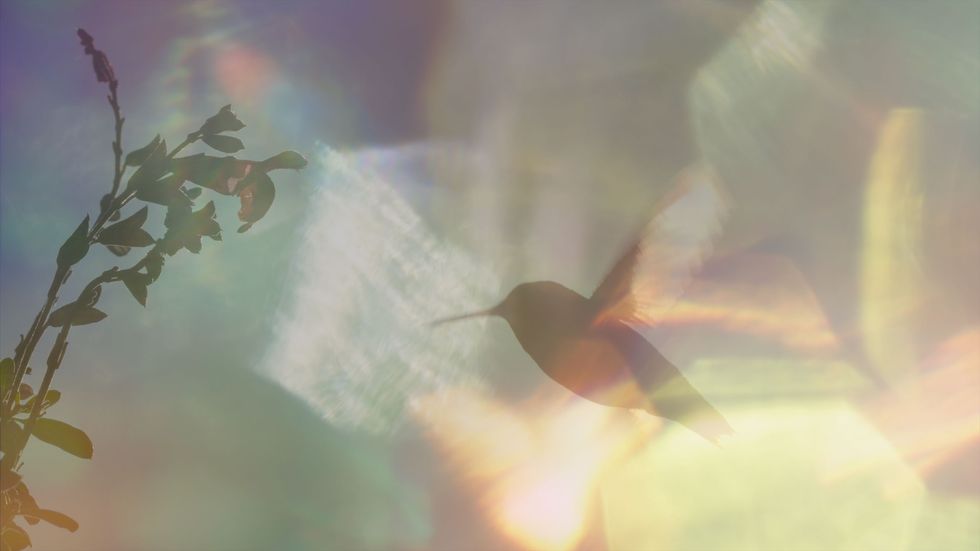
‘Every Little Thing’
Directed by Sally Aitken, this documentary follows a woman in Los Angeles who finds herself on a transformative journey as she nurtures wounded hummingbirds. For this project, the team used the RED Komodo and RED V-Raptor with a myriad of Canon glass.
From Canon CN-E prime to L-Series zooms, and Macro. The project also utilized the Phantom Flex for super high-rate footage.
“We love the RED ability to go to 6K giving us more scope to punch into shots in the edit,” said producer Bettina Dalton. “The Phantom Flex allowed us to capture the mesmerizing flight of (hummingbirds) in a slo-mo speed that the audience could witness.”
But shooting in 6K and high frame rates did come with its challenges.
“There will always be more data to wrangle then you estimate,” Dalton said. “Either know your story beats to a tee before you start shooting, or you will shoot crazy amounts and try to deal with it in the edit. The data wrangling and creation of proxies and logging can create a false economy of scale rather than being spoilt for choice.”
‘Merman’
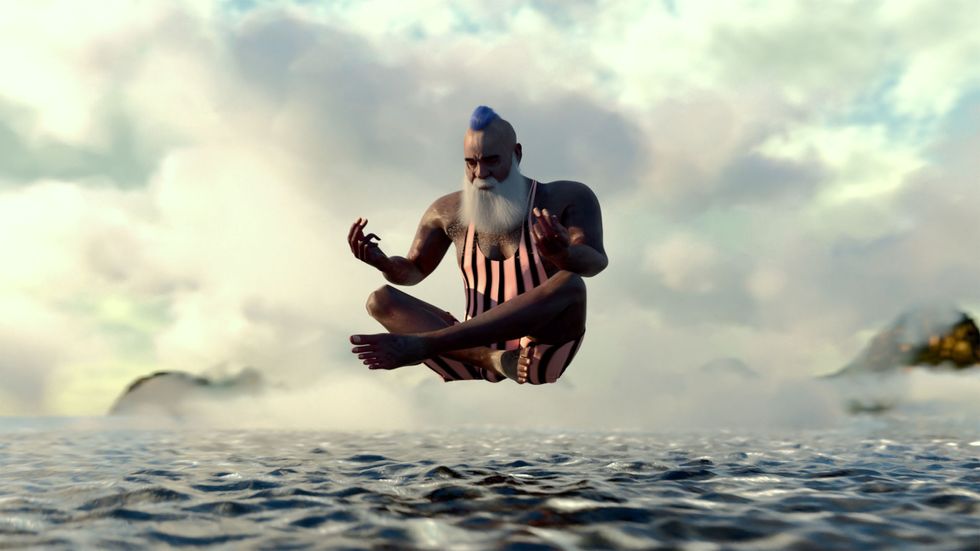
Another project that utilized the RED Komodo was Merman, a nonfiction short film directed, written, and produced by Sterling Hampton IV. This project focused on a 58-year-old Black Queer man who speaks the truth about his life as an emergency nurse, a leather enthusiast, husband, and civil rights advocate.
Yet, Hampton opted to pair the Komodo with vintage Minolta lenses.
“The Komodo is such a versatile camera body,” Hampton said. “And because of its low profile form factor it’s a great run and shoot imaging device. I own the camera and have had a great experience with it. My DP’s Minolta lenses have a great look and add a lot of character to picture.”
This setup gave the Merman team the ability to shoot quickly, with the whole project taking only 7 hours to film.
“We filmed the whole project in 7 hours in Palm Springs,” Hampton said. “I sort of strategically only gave us a day of time to film in effort to strike up as much spontaneity as possible during the shoot.”
‘Eternal You’
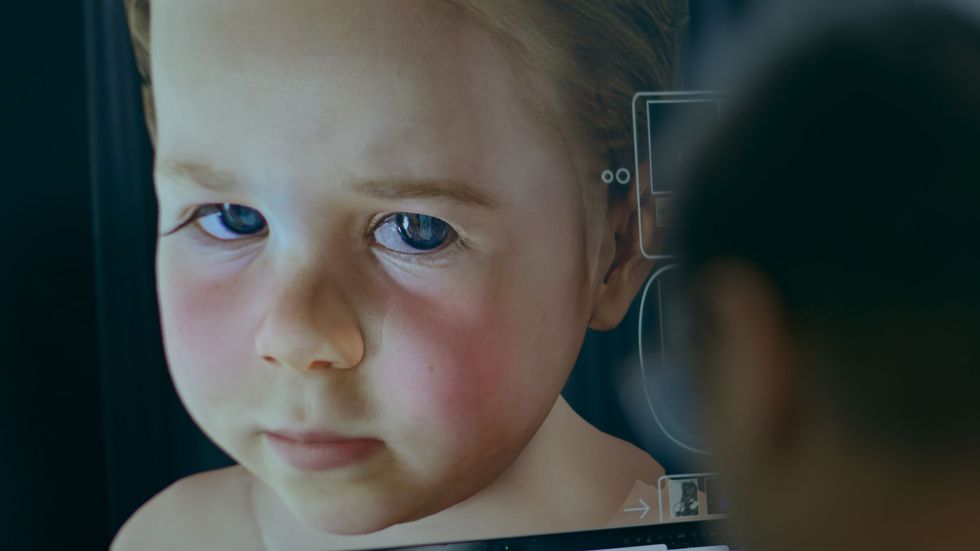
Another project to utilize photography lenses was Eternal You, which is a documentary that explored startups that are using AI to create avatars which allow relatives to talk with their loved ones after they have died.
The project used a Sony FX3, FX9, and Canon C500, but mainly paired the cameras with Contax Zeiss photography lenses.
The movie was shot over years, but with all the innovation AI had gone through in 2023, the documentary quickly evolved.
“After we had worked on the movie for years, so much has happened in 2023,” directors Hans Block and Moritz Riesewieck shared. “and the movie has changed a lot in the last weeks and months.” The director continued to say “a lot became possible very quickly.”
Having affordably lenses and cameras on hand is crucial for documentaries, as things can change quickly and catching the moment requires being quick on your feet.
‘Thelma’
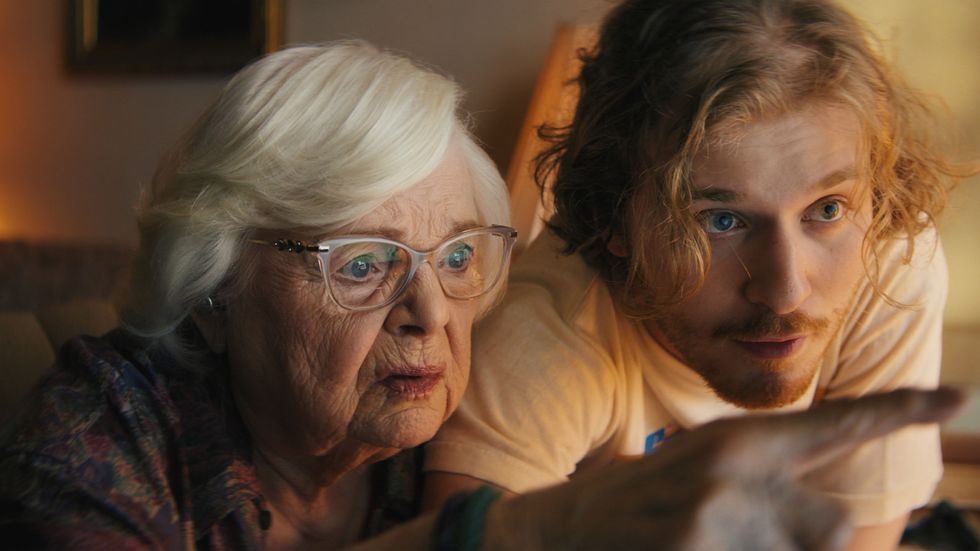
A film about 93-year-old Thelma Post, who gets duped by a phone scammer pretending to be her grandson, was one of few films that used an ARRI Alexa 35.
For this project, writer and director Josh Margolin paired his camera with the Hawk V-Lite anamorphic lenses.
“My DP David Bolen and I wanted to create a textured, filmic look,” Margolin said. “And the falloff on (the Hawk V-Lite lenses) gave the image a really beautiful, imperfect quality.”
The lenses also paired well with the new ARRI camera system, allowing Margolin and his team to compose in low light scenarios.
“The dynamic range of the Alexa 35 was also really helpful for our shoot, which was fully on location and had us navigating all kinds of lighting conditions,” Margolin said. “The high ISO capabilities were also useful because we had a lot of night shoots and wanted to be able to rely on natural light when possible.”
‘Girls Will Be Girls’

Another film to use some unique lenses, Girls Will Be Girls is set in a strict boarding school nestled in the Himalayas and follows 16-year-old Mira who discovers desire and romance.
Paired with an ARRI Alexa Mini, director, screenwriter, and producer Shuchi Talati, utilized the Zeiss Super Speeds MKIII for the project. These lenses are an industry workhorse, and bring good contrast while not being too sharp, making they popular across all types of productions.
For Talati, making intimacy the core of the project was important for the story, with the team going as far as to record the lead actress breathing in ADR.
“This is a common technique in France but was brand new to me,” Talati said. “I didn’t understand it until we recorded Preeti breathing in sync over nearly each close-up. We can communicate so much through breath: the moments when you’re out of breath or afraid are obvious, but there are so many subtle gradations. The anxious moment when you imperceptibly hold your breath, when you take a deep breath to steel yourself, or when you exhale to release tension. These were already in the performance but laying ADR breathing over it heightened each moment.”
With the subtle soften and contrast of the Zeiss Super Speeds MKIII’s, moments like these can be elevated.
‘Layla’
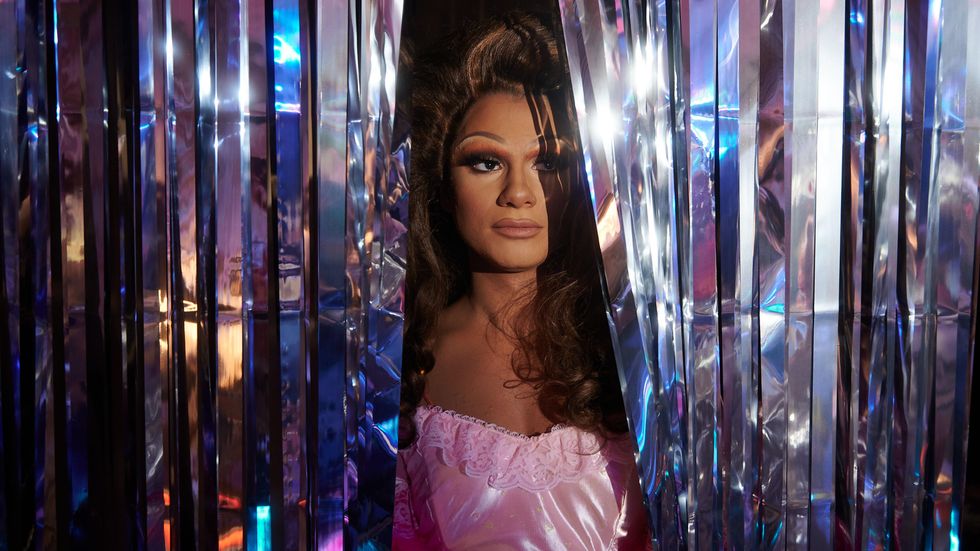
Finally, we look at the feature film directed by director and screenwriter Amrou Al-Kadhi, who created a film about a struggling Arab drag queen that falls in love for the first time.
Using the ARRI Alexa Mini, Al-Kadhi and their team paired the camera with Cooke anamorphic lenses.
“These lenses allowed us to really take in the spaces of the film and incorporate all their details,” Al-Kadhi said. “Queer space is a key theme of the film, and the locations are just as characterful as the characters, and so having lenses that allowed us to really take in their majesty and specificity was key.”
Cooke glass is know for it’s particular look, commonly known as the “Cooke Look,” which provides a sharp yet subtle and smooth rendering and gives compositions dimensionality, high contrast, that is pleasing to the eye.
“We also wanted to elevate the production value beyond indie film expectations,” Al-Kadhi said. “So to give this queer POC story cinematic grandeur—the queers deserve production value and scale!”
What We Can Learn
Having expensive lenses can elevate your production value, but the availably and quality of tools have made lens choice decisions a lot more complex. Generations of lenses are now available to filmmakers, from vintage cinema glass to photography lenses and industry leaders. All at an affordable cost.
In addition, as camera become sharper and provide higher resolution, filmmakers are seeking more character from their glass to elevate their visual aesthetic.
So, where does that leave us? Well, it leaves us spoiled for choice. We don’t need the most expensive lens, just the one that helps us tell the best possible story.

No Film School’s coverage of Sundance 2024 is brought to you by Canon.
Author: NFS Staff
This article comes from No Film School and can be read on the original site.
